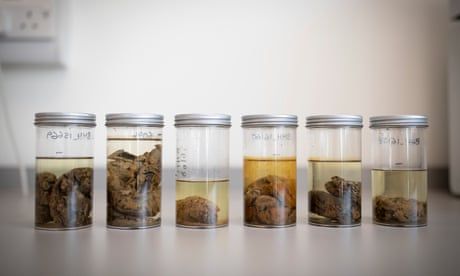
Using cutting-edge methods, Alexandra Morton-Hayward is cracking the secrets of ancient brains – even as hers betrays her
Alexandra Morton-Hayward, a 35-year-old mortician turned molecular palaeontologist, had been behind the wheel of her rented Vauxhall for five hours, motoring across three countries, when a torrential storm broke loose on the plains of Belgium. Her wipers pulsed at full speed as the green fields of Flanders turned a blurry grey. Behind her sat a small, black picnic cooler. Within 24 hours, it would be full of human brains – not modern specimens, but brains that had contemplated this landscape as far back as the middle ages and had, miraculously, remained intact.
For centuries, archaeologists have been perplexed by discoveries of ancient skeletons devoid of all soft tissue, except what Morton-Hayward cheerfully described as “just a brain rattling around in a skull”. At Oxford, where she is a doctoral candidate, she has gathered the world’s largest collection of ancient brains, some as old as 8,000 years. Additionally, after poring over centuries of scientific literature, she has tallied a staggering catalogue of cases – more than 4,400 preserved brains as old as 12,000 years. Using advanced technologies such as mass spectrometry and particle accelerators, she is leading a new effort to reveal the molecular secrets that have enabled some human brains to survive longer than Stonehenge or the Great Pyramid of Giza.
Continue reading...